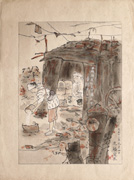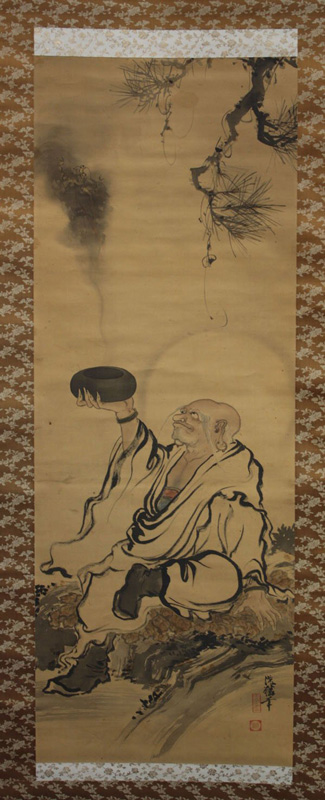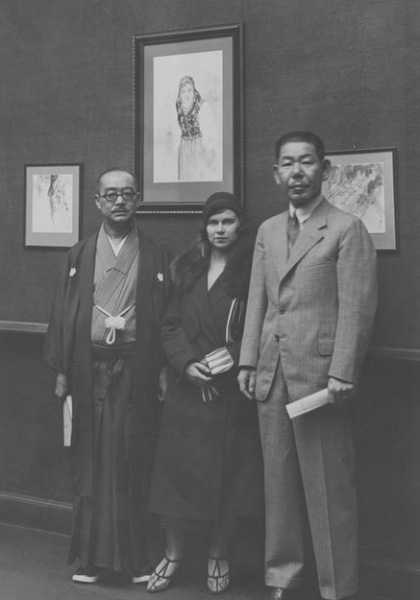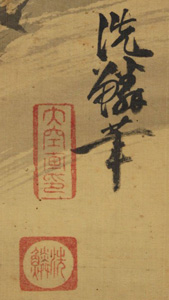Biographical Data
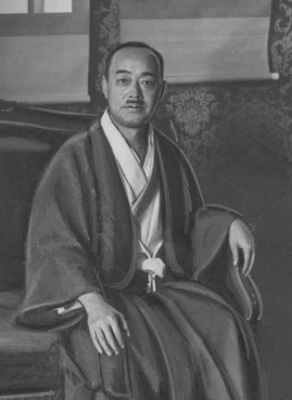 Portrait of the artist by Vladimir Bartoszewicza, c. 1930 (National Digital Archive, Poland) | Kiriya (also seen as Kiritani and Kirigaya) Senrin 桐谷洗麟 [桐谷洗鱗] (1876/77-1932) Sources: A Dictionary of Japanese Artists: Painting, Sculpture, Ceramics, Prints, Lacquer, Laurance P. Roberts, Weatherhill, 1976, p. 80; Woodblock Kuchi-e Prints: Reflections of Meiji Culture, Helen Merritt and Nanako Yamada, University of Hawaii Press, 2000, p. 203 and as footnoted. Born Fukami Chōnosuke in 1877 in Niigata prefecture, he was adopted by the Kiriya family at the age of 24. Starting around 1897, he studied under the Japanese-style (nihonga) artists Tomioka Eisen (1864-1905) until his death, and afterward with Hashimoto Gahō (1835-1908). Senrin also attended the Tokyo Art School extension course in Japanese painting, graduating in 1907. Senrin was an authority on Buddhist paintings and made copies of Buddhist paintings in Kyoto and Nara, as well as traveling in India from 1911 to 1913 and then again in 1917 to study the ancient Buddhist wall paintings in the Ajanta Caves. While he was most well-known for his own Buddhist paintings, he also designed kuchi-e for the novel "Ōishi Yoshio"1 by Tsukahara Jūshi-en (1848-1917), published by Ryūbunkan in 1906; illustrated for the "Kyoto hinode shimbun"2, and contributed six designs to the 1924 woodblock print series Taishō shinkasai mokuhangashū 大正震火災木版画集 (Collection of Woodblock Prints of the Taishō Earthquake.) |
In 1930 he traveled to Warsaw (see photo below) where he exhibited both prints from the above series and scrolls, such as the one shown below.3
Sample Signatures and Seals
| 洗麟 筆 Senrin hitsu with unread seals | 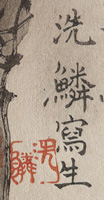 Senrin shasei (sketched from life)] with Senrin seal |  Senrin with Senrin seal |
1 In The Media and Politics of Japanese Popular History: The Case of the Akō Gishi, Henry Smith calls this work, "the first historical novel to take on the Akō incident seriously."
2 The Artist's Touch, The Craftsman's Hand: Three Centuries of Japanese Prints from the Portland Art Museum, Maribeth Graybill, Portland Art Museum, Oregon, 2011, p. 291.
latest revision:
1/7/2021
